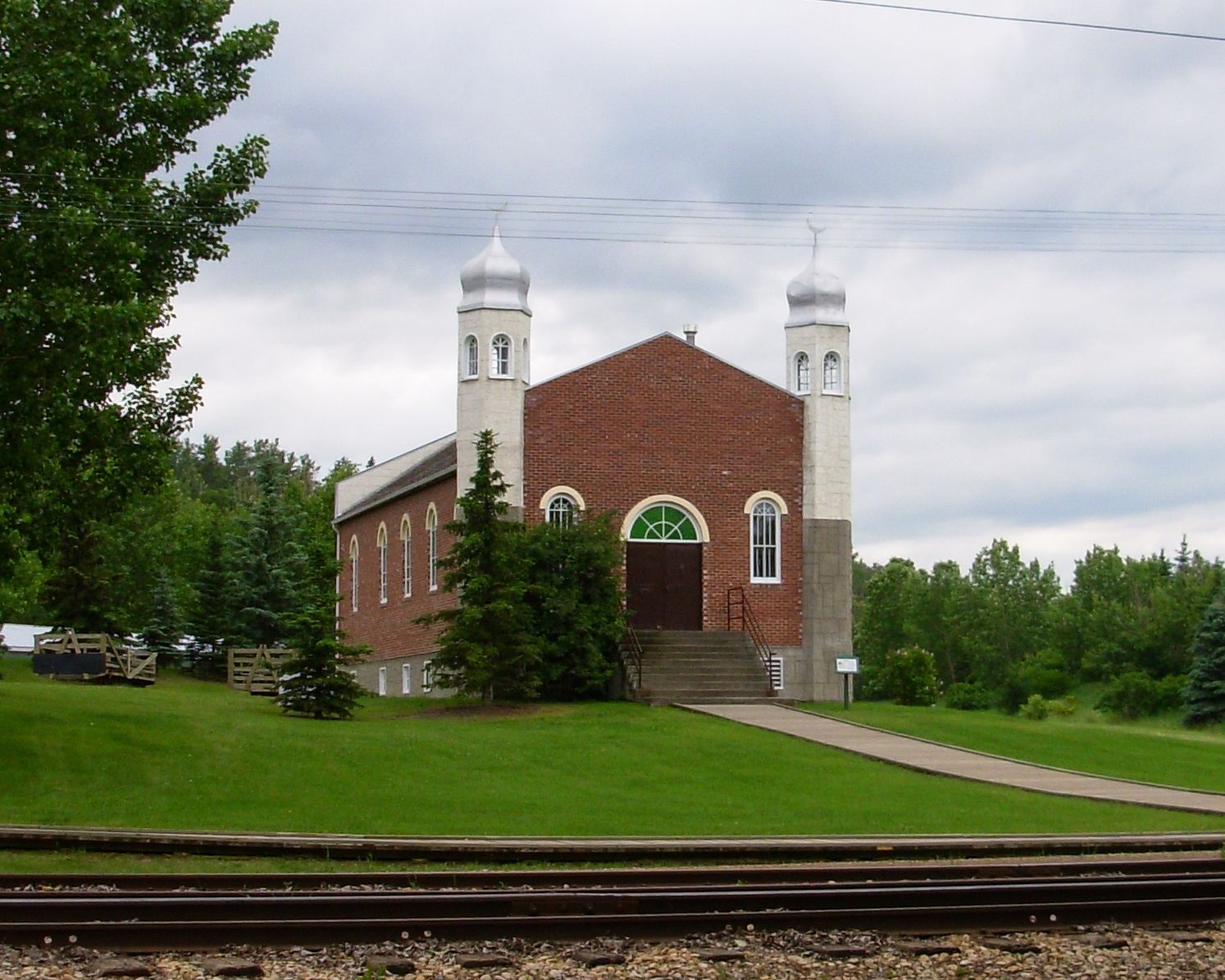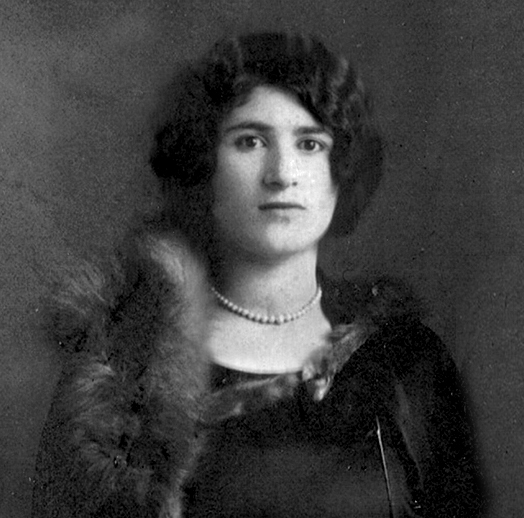Al Rashid, a mosque in Edmonton, was dedicated in 1938 and became Canada’s first mosque. It was funded through community initiatives from the Arab community, led by Hilwie Hamdon. The Al Rashid Mosque has played a definitive role in the growth of the Muslim community in Alberta and across the country through many important initiatives. (See Islam.)
Community Origins
In the late 1800s and early 1900s, several families from the Beqaa Valley, in what was Syria (now Lebanon), migrated to Canada. By the 1930s, some dozen Lebanese Arab families were successfully established in Edmonton’s business and social environment. This group became the nucleus around which a mosque community has flourished, spawning many other mosques as Muslims migrated to Alberta. (See Islam.)
Building the Al Rashid Mosque
The building program for a mosque was initiated in the 1930s. A group of Arab businesspeople, led by the irrepressible Hilwie Hamdon, bargained with Edmonton’s mayor, John Wesley Fry, to purchase a lot in Edmonton’s downtown core area for $5,000. The organizers drew upon a scattered Muslim population throughout the prairies to help finance the building. Hilwie also went from business to business along Jasper Avenue, soliciting funds toward the mosque’s construction. She drew support from all religious groups to help. This positive communal focus was embodied by the culinary talents of the community’s women. They attracted city residents by the score with their Middle Eastern cuisine during Ramadan and Eid festivals.
The building was opened to significant acclaim in 1938, since it was the first mosque in Canada and one of the very first in North America.

The mosque’s architectural design is unique. Some have remarked that the mosque has some Ukrainian influences, but the building was likely an amalgam of several architectural styles in Edmonton. The design was later replicated in other Islamic buildings in the region.
Community Growth
Once built, the Al Rashid Mosque attracted a growing population. Its location in the city also drew in Muslims interested in Edmonton’s financial and educational opportunities. Right from the beginning, educational endeavours were given high priority. Rudimentary Arabic was taught in the basement, and preliminary Islamic school teaching, Qur’an reciting, and religion classes were developed. In its early days, Muslims of all persuasions utilized the mosque, with women in a separate section or praying behind a curtain. (See Islam.)
Throughout its history, the mosque leadership has predominantly remained in the hands of Lebanese Muslim Arabs. (See Arab Canadians.) As it expanded, Sunni ideology became more dominant, and other Muslim orientations moved to their own precincts. The mosque’s first imam was Najjib Ailley, a local businessman turned imam, who held the position until 1959. Thereafter, the role was confined to professional bilingual Arab-English imams, all of whom were Sunni.

Early educational successes evolved in several directions. Arabic language teaching was taken up by the public system in Edmonton, with two schools promoting its study. This was possible through the efforts of Lila Fahlman and Soraya Hafez. Another widely lauded educational initiative was the Edmonton Islamic Academy, which today provides schooling up to grade 12. Mentoring converts (reverts) is another important educational activity: this required particular attention and imams with skills in those areas.
Expansion
By late 1960, it became evident that the original Al Rashid Mosque could no longer hold the large crowds that wished to attend its services. Moreover, the city of Edmonton wanted the site for a hospital expansion. As a result, the board bought land from the city in the north side. By 1982, a new Al Rashid Mosque was opened. The old one sat empty.

When the city urged the community to move or demolish the old mosque, the women once again took up the cause and raised funds to move the mosque. Eventually, approval was granted to move it to a site in the city’s heritage location, Fort Edmonton Park, where it rests as part of Edmonton’s distinguished heritage.

Challenges
Over its history, the Al Rashid Mosque’s community has had to grapple with divisive issues such as international repercussions from al-Qaeda or Canadian support for Israel. However, the mosque’s board has attempted to focus on developing a broad Canadian Islamic response to crises. Thus, when Muslims around the world were struggling with the influence of the political Islamist doctrine (Salafism), Al Rashid's leadership resisted. It instead turned inward for a variety of community initiatives: it promoted the Edmonton Council of Muslim Communities’ efforts to establish a chair in Islamic Tradition at the University of Alberta (the only such cross-Islam chair in North America in 2005); it developed full-scale youth programmes, like the Scouts and young women’s activities; and it expanded its support for the youth with educational grants and college support. Meanwhile, Lila Fahlman tackled women’s issues by championing the crucial Canadian Council of Muslim Women. (See also Council of Muslim Communities of Canada.)
Despite these initiatives, the mosque congregation faced various social and political issues. After 9/11, Canadian intelligence monitored community members. Moreover, the growth of Canadian Islamophobia has also impacted the community. Mindful of global criticisms of the restrictions on women in Muslim countries, it focused on affirming the public role played by its own successful women. Using various strategies, the mosque’s leadership has been successful in steering the community away from these controversies.
In the wider public sphere, some members have had significant roles. Edward Saddy, who was president of the board in the 1970s, became the first Muslim judge in Canada. In 1986, Larry Shaben became the first Muslim cabinet minister of a provincial parliament in Canada.
Today, Al Rashid continues to provide a wide range of social, educational and public services that is built upon its rich and storied heritage.
Al Rashid Mosque — the first mosque in Canada — opened in Edmonton in the late 1930s, but getting it built was no small feat. It happened thanks to the determination of a group of Lebanese Muslim women, led by Hilwie Hamdon, who brought Albertans of all faiths together to help make history.
Note: The Secret Life of Canada is hosted and written by Falen Johnson and Leah Simone Bowen and is a CBC original podcast independent of The Canadian Encyclopedia.

 Share on Facebook
Share on Facebook Share on X
Share on X Share by Email
Share by Email Share on Google Classroom
Share on Google Classroom



